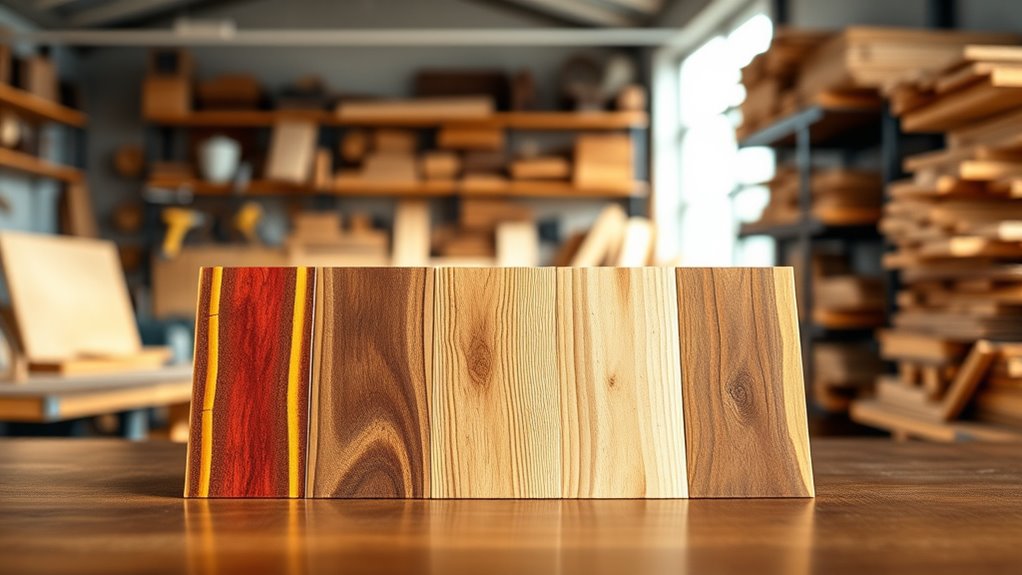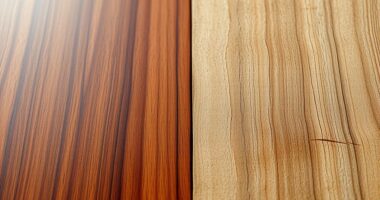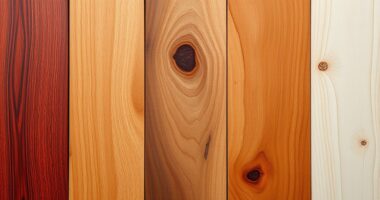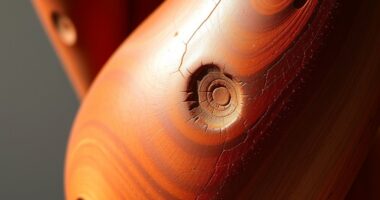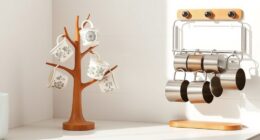In 2025, you’ll see increased popularity in White Oak for its light, natural look that makes spaces feel open and inviting. Walnut remains in demand for its rich tones and elegant grain, perfect for luxury interiors. Maple continues to be favored for its durability and versatility, especially for furniture and flooring. Cherry wood offers warm hues that deepen with age, adding character. Alder, praised for its sustainability and affordability, is becoming a favorite for casual and cozy designs. Keep going to discover more about these top choices.
Key Takeaways
- Alder is increasingly favored for its sustainability, affordability, and versatile application in furniture and interior design.
- White Oak remains a top choice for its natural, light appearance and adaptability in contemporary and organic decor styles.
- Walnut gains popularity for luxury cabinetry and high-end furniture due to its deep, rich tones and unique grain patterns.
- Maple continues to be preferred for its durability, hygiene, and suitability for modern and traditional spaces.
- Cherry wood’s warm, reddish hues and aging patina make it a sought-after option for cozy, inviting interiors.
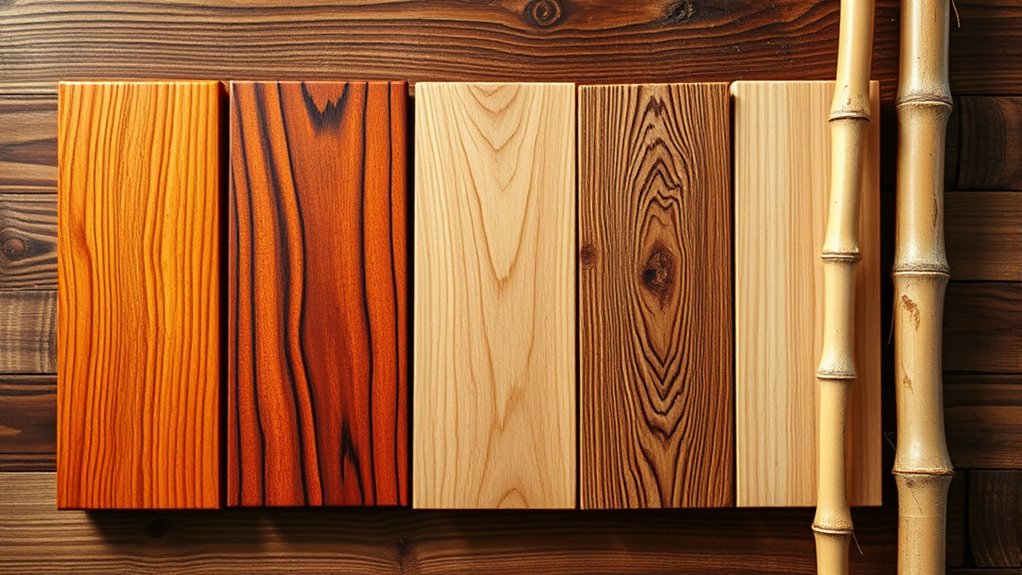
As homeowners and designers seek materials that combine style, durability, and sustainability, certain wood types are emerging as favorites in 2025. White Oak stands out as a top choice for kitchen cabinets because of its light, natural tones and versatile grain pattern. Its bright, airy appearance helps create open, inviting spaces, aligning perfectly with current trends favoring openness and light. The subtle shades of White Oak add sophistication to living areas, especially in hardwood flooring, where its neutral undertones make it adaptable to various decor styles without overpowering other design elements. This combination of durability and style makes White Oak a go-to for contemporary and organic interiors. Meanwhile, Walnut continues to hold a prominent position due to its deep, rich tones that bring a sense of depth and elegance. Its unique, flowing grain pattern adds visual interest, making it highly desirable for luxury cabinetry and high-end furniture. Walnut’s pliant yet sturdy nature allows it to be used in premium work like veneers and cutting boards, balancing aesthetic appeal with functionality. Its warm, luxurious appearance makes it a favored choice for those looking to add a touch of opulence to their interiors, especially when aiming for a sophisticated, timeless look. Maple remains a staple in 2025, earning the reputation as the “gold standard” for cutting boards because of its durability, hygiene, and affordability. Its light color complements bright, modern spaces, making it ideal for furniture and flooring applications. Maple’s consistent grain and strong, smooth texture resist moisture, ensuring longevity in kitchen environments. Its neutral, versatile base supports warm interior trends without overwhelming other design elements, making it suitable for a wide array of styles from minimalistic to more traditional settings. Additionally, the ease of working with Maple makes it a favorite among DIY enthusiasts and craftsmen. Cherry wood appeals for its warm, reddish hues that deepen with age, developing a rich patina over time. Its moderate hardness strikes a balance between durability and ease of use in items like cutting boards and furniture. The smooth, closed grain enhances hygiene, though it may show knife marks more easily, requiring some maintenance to preserve its beauty. Cherry’s inviting color and texture make it popular for decorative elements and furniture, especially when homeowners want a cozy, welcoming ambiance. Lastly, Alder is gaining ground thanks to its sustainability, affordability, and workability. Its lightweight, strong structure and broad grain pattern resemble cherry but with a more eco-friendly sourcing profile. Its subtle warmth complements the trend toward warm, cozy interiors. sustainable sourcing of Alder is a key factor driving its increasing popularity among environmentally conscious buyers. The sustainable harvesting practices used for Alder ensure its continued availability and minimal environmental impact. Alder is increasingly used in furniture, moldings, and paneling, offering a practical yet attractive option for those seeking sustainable, customizable wood solutions. Its lighter tones make it a versatile choice that fits seamlessly into casual or rustic interior styles, ensuring it remains a popular pick in 2025.
Conclusion
So, as you avidly embrace these trendy woods, remember how quickly popularity can fade. Today’s hottest may be tomorrow’s forgotten. You might invest in the latest, only to find it’s replaced by something newer. It’s almost poetic—chasing fleeting trends while overlooking timeless quality. So go ahead, choose your wood wisely, but don’t be surprised if these “hot” types make way for the next big thing. After all, nothing stays trendy forever.
